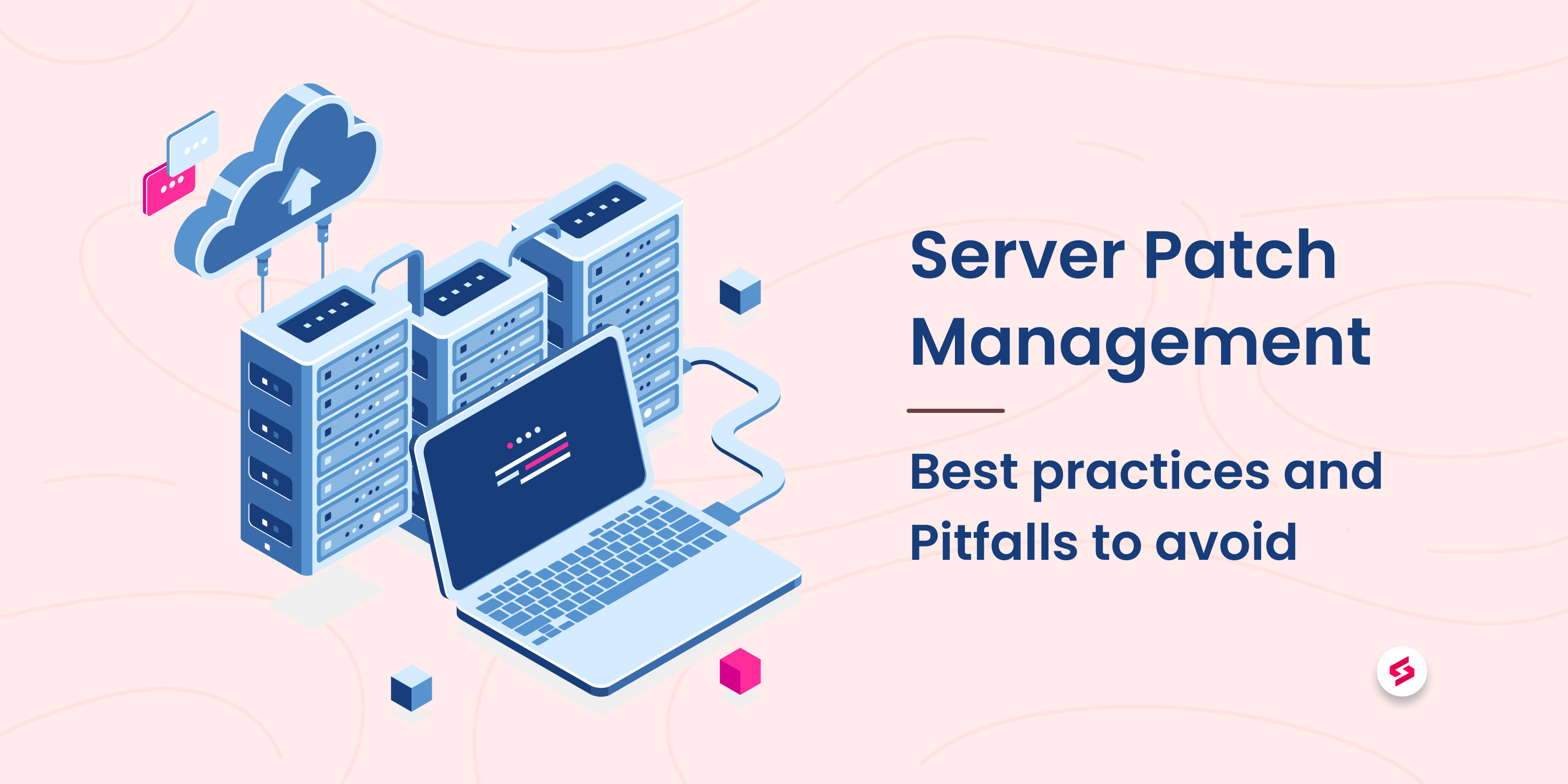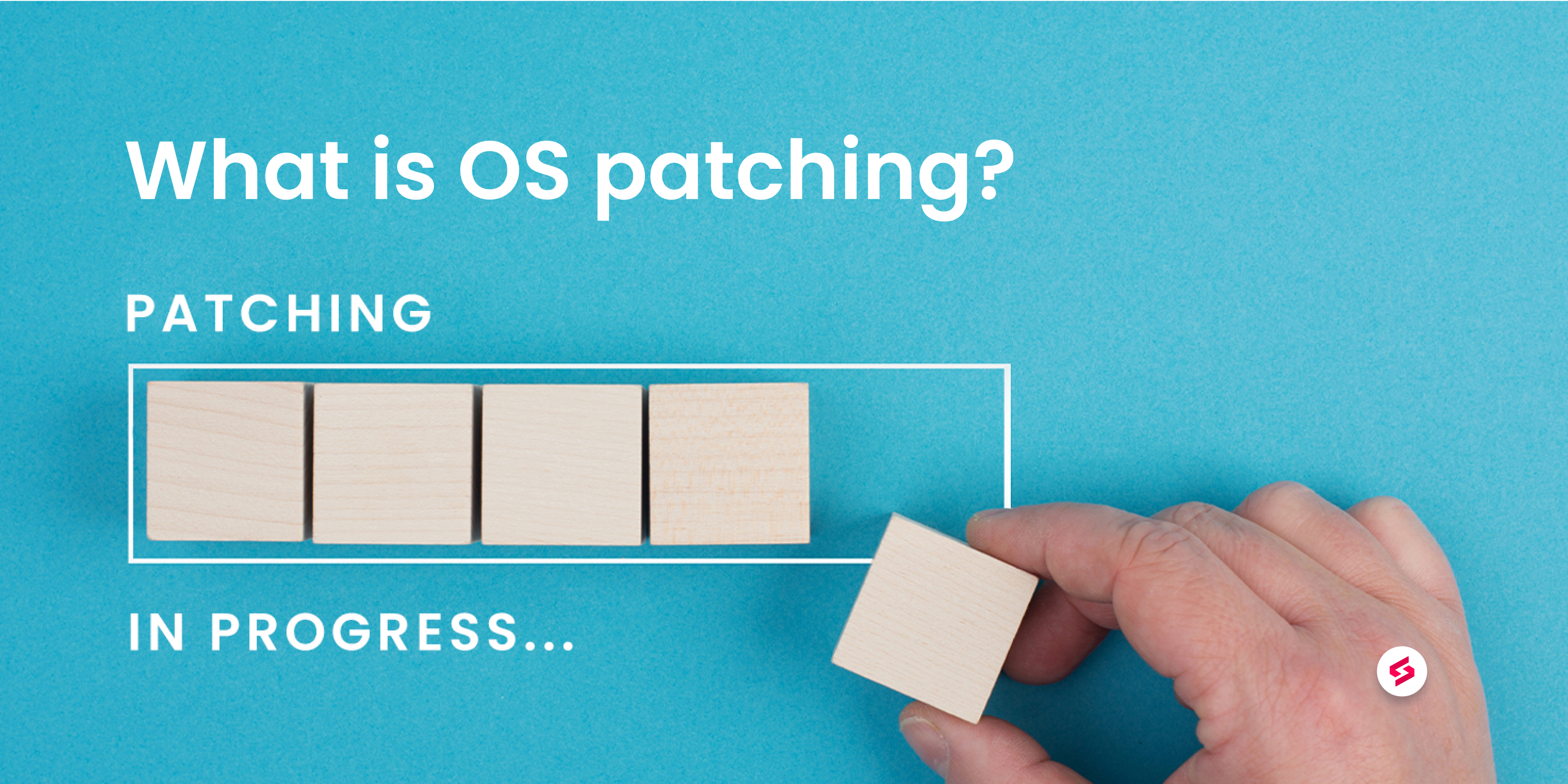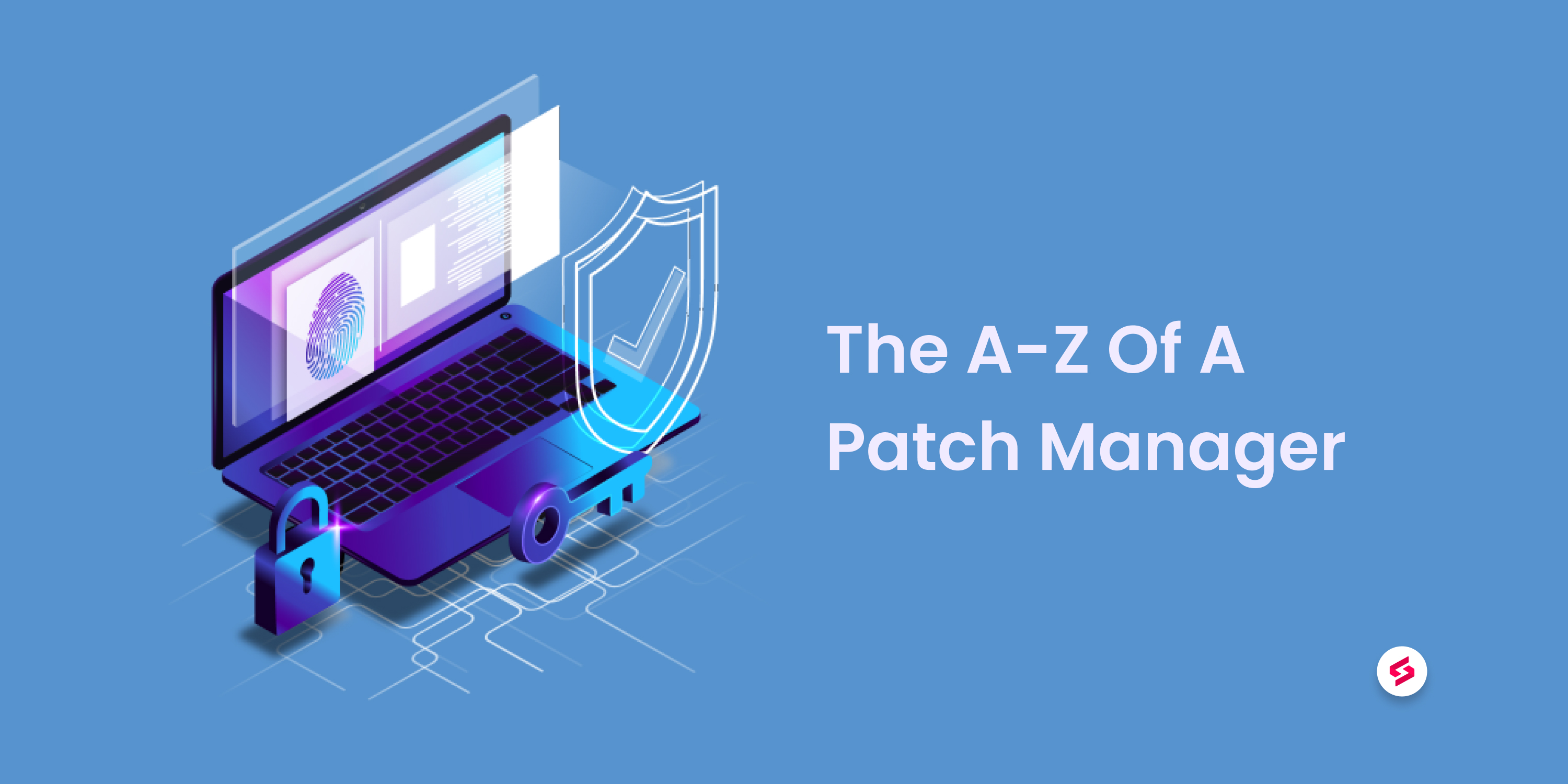The 7 Best Patch Management Software of 2023
If you’re an IT service provider looking for a Patch Management Software, how do you go about it? We’ve just made it easier for you - we chose the top 7 platforms in the market and compared them extensively against each other to bring you the best of the best. Without further ado, let’s dive in.
SIGN UP FOR SUPEROPSWhile there seems to be an application for everything today, not every application is right for every organization. Selecting the right patch management software for your organization requires understanding the organization's needs and selecting the patch management tool that offers the closest feature match. The best patch management software has a wide variety of uses, depending on the scope of control needed by the organization.
Almost every organization needs to secure and patch servers, network gear, and other infrastructure, but endpoint patch management capabilities are also important for large enterprises and Managed Service Providers (MSPs) with multiple sites and thousands of computers and mobile devices to manage. There are several classes of tools to choose from:
- Patch management software: Applications that focus on managing the workflows associated with patching all system types. These applications help manage a wide variety of operating systems (Windows, Mac, Linux, UNIX, IOS, Android, and others, for example) and applications. They also provide workflows that manage the patch management process from identification through testing, approval, and deployment. Suppose the organization's primary need is patch management. In that case, it's important to be sure the patch management features within a larger suite offer all the features of a patch management application and manage all the operating systems needed.
Looking for a patch management software that fits your bill? |
Vulnerability management software: These applications focus on the security management space and cyber-attacks by providing a database of known vulnerabilities along with the patches that fix these vulnerabilities. They can scan infrastructure and endpoints to identify where vulnerability patches are needed and manage them through the deployment process. If the organization already has a security operations group that uses a toolset built for security operations, the patch management application simply needs the ability to integrate with that tool and open work orders for patches needed as a result of a vulnerability management scan. Before opting for a more extensive suite that offers full security operations capabilities, the organization should ensure the security operations group is willing to make the change.
RMM (Remote Monitoring and Management) tools: Designed for large enterprises and MSPs, RMM software focuses on creating and managing device and software inventories and patching activities for these endpoints. Rather than focusing only on patching, they keep device management at the core, leveraging artificial intelligence to identify issues with device health, and then open work orders for technician attention. They also manage automated patching of these devices, including OS, application, and security patching, and provide service desk ticketing and self-service support. The best RMM solutions provide a single console from which technicians can manage devices and user support while leveraging integrations that open tickets from monitoring systems, vulnerability scanning products, and other patch management systems. Combining RMM capabilities with patch management features is a strong starting point for large organizations.

Patch management software features
The best patch management tools will have various features to protect computing resources and manage their health. Common features to look for in patch management software include:
Ability to patch varied operating systems: Best-of-breed patch management tools will support Windows, Mac, Linux, IOS, and Android devices and may also offer the ability to manage a wide variety of device types, like servers, personal computers, and mobile devices.
Vulnerability management: Patch management software is a critical component for securing the enterprise by enabling the organization to manage hundreds of patches released to remediate vulnerabilities found in operating systems and applications.
Endpoint management: While many products focus on infrastructure, the best patch management software will also help manage endpoint devices, helping to ensure they are running the expected operating system and application versions and alerting technicians when they are not.
Governance tools: Even if the goal is ensuring safe and up-to-date management of the computing environment, organizations need to ensure compliance through reports and periodic audits in several primary areas:
Device compliance: Confirmation that every device is running acceptable versions for their operating system and applications running on the device, including any/all patches supplied by the vendors.
Reporting: Ability to run and review reports on the history of patch management activities, including missed devices, approvals, deployment dates, and other information the organization tracks as part of their program.
Exception management: A clear and documented process is being followed when software conflicts or testing indicate that a particular patch cannot run successfully on a particular device, including acceptance of the risk involved.
Service Desk support, including the ability to perform support operations and manage tickets through their patch management software, by having access to RMM (Remote Monitoring and Management) features that go beyond simple patch management. These features add several capabilities:
Asset Management: Full inventory of hardware and who is using it as well as the software and patches running on each device.
Ability to log tickets and investigate user-reported issues and use automated runbooks to ensure consistency of support or simple automated resolution.
Workflow to assist with support and patching, including the ability to track test results and gain approvals for patch deployment.
Features that enable the use of artificial intelligence to help manage device health by logging proactive tickets for devices that need attention.
Availability of dashboards that enable technicians to focus on the most critical activities first.
Two technical areas are important as well:
Scripting and script libraries for deployment automation
Ease of integration with external systems
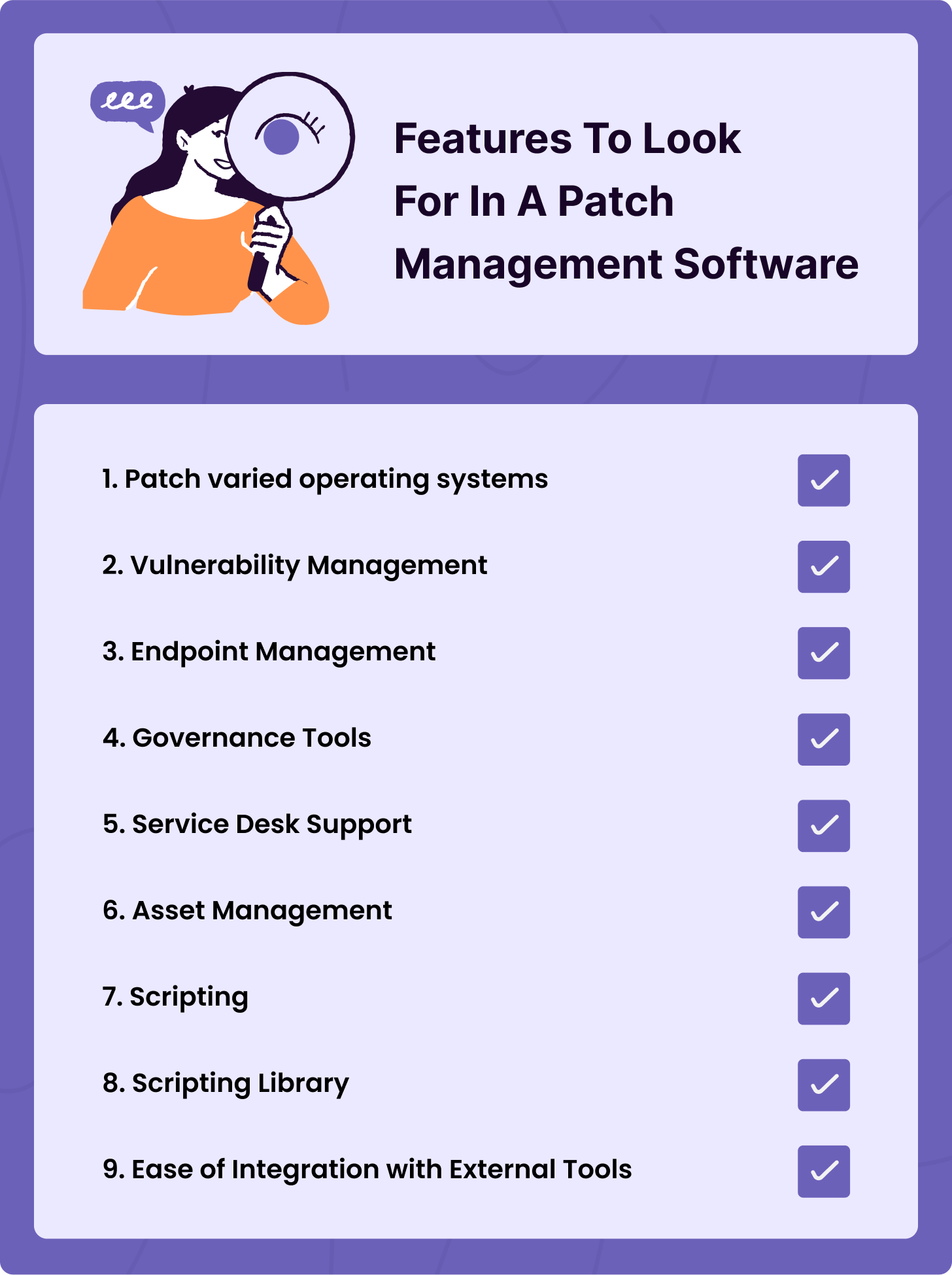
The ability to script policies or leverage a pre-existing library of scripts enables organizations to automate patch deployment for specific groups of endpoints. For example, Windows patches that have cleared the testing and approval process are automatically deployed every Wednesday between 2 am and 5 am. This level of automation reduces manual effort and helps IT personnel operate more effectively.
Integration features provide the ability to tie tools together. For example, if an organization already uses a security operations suite that maintains a database of known vulnerabilities and scans for these vulnerabilities within the computing environment, it won't need these capabilities in its patch management software. Instead, they need the ability to integrate with the security solution and open work orders within the patch management software to manage the patching of the vulnerabilities found.
To select the best patch management software, IT personnel must first assess which features are important for their patch management tool and evaluate products with their needs in mind. They may also find it helpful to consider the newer classes of patch management applications that combine patch management and remote monitoring and management toolsets to create a unified IT management platform.
All the essential features of patch management, bundled up in one tool |
Finding the best patch management tool
SuperOps supports your need to select the best patch management software by researching other products on the market and comparing tool capabilities and costs to demonstrate our superiority over many other tools. We've compared the top patch management software and present that comparison to you here to help you find the patch management application that offers the features you need at the best value to the organization. We've looked at the complete feature sets of patch managers and RMM tools to enable you to select the patch management software that most closely matches your organization's needs. More than that, we're providing both a quick reference table comparing 7 patch management tools and a brief description of each product's strongest features.
Features addressed in this comparison include:
The cost structure for using the patch management software and whether it is subscription-based or based on the number of agents or endpoints
Availability of a free trial for any proof-of-concept needs
Operating systems and supported device types
Patch management features
Remote monitoring and management features
Reporting and governance
Service desk support
Billing support
SuperOps
SuperOps is a right-sized platform that is more than a patch management tool. With robust patch management, RMM (Remote Monitoring and Management), and PSA (Professional Services Automation) features, SuperOps is a modern and innovative centralized endpoint management platform. Its patch management application supports Windows and macOS devices, third-party software management and patching, and uses artificial intelligence to create intelligent AI-powered alerts when endpoints face issues with performance. The RMM features of SuperOps enable organizations to manage hundreds of assets with customized patch management policies, automation of the patch management process from cataloging patches through testing, approval, and deployment, automated client backups, and the ability to generate tickets using artificial intelligence.
Patches identified by a security operations vulnerability and/or scanning service are easily imported, providing a single console for technicians. Policies supplement the ad hoc patch management features by enabling automation of endpoint patching workflows and deployment based on device type and OS. SuperOps goes beyond some of the other platforms in this space by including remote access to devices, RegEdit (registry editor), and file access capabilities on Windows platforms.
As a PSA tool, SuperOps has a service desk, email, and self-service ticket management solution through IT documentation, tied into billing and other client management features, enabling full support of invoicing and internal financial management or MSA finance operations. An IT documentation library, robust reporting capabilities that include technician and compliance dashboards, and project management features complete this enterprise IT management platform's capabilities.
Companies with an interest in the product can leverage a free trial to conduct a proof of concept and build a business case. The product is available for $29-99/per tech per month, depending on the modules purchased.
SuperOps provides all features needed for patch management in a large enterprise or MSP, along with some additional differentiating features organizations can benefit from. When it comes to software deployment, it can also manage patching for thousands of third-party applications, placing it above other patch management tools in its category. From a cost-feature perspective, this is the best of class for the patch management applications reviewed as it provides everything large enterprises or MSPs need to manage endpoint operations successfully and support end users with a proactive, automation-driven approach.
Your search for the best patch manager ends here! |
NinjaOne (formerly NinjaRMM)
NinjaOne has grown its NinjaRMM patch management application into an enterprise platform. It supports Windows, macOS, Linux, VMWare, and SNMP (network) operating systems and over 100 Windows applications across the Internet. Policy support enables administrators to define patch management strategies for each device type as well as ad hoc deployments. Workflows support the patch management lifecycle from identification through patch deployment. NinjaOne also performs security vulnerability scanning, logging tickets for remediation. It also enables automation through policies, automated remediation of out-of-compliance devices, and can reach any Internet-connected device, without any additional infrastructure needed to operate the application.
From an RMM standpoint, NinjaOne provides monitoring, supports automated responses to known errors, and provides health and performance information for supported endpoints while also providing remote control capabilities and endpoint backups. Policies and information can also be housed in their IT documentation library.
Companies with an interest in the product can leverage a free trial to conduct a proof of concept and build a business case. Product costs are determined on a per device/per month basis, and quotes are available through the vendor.
ManageEngine Patch Manager Plus:
Patch Manager Plus is a standalone component of a highly robust operations and enterprise service management platform. This patch management application supports Windows, macOS, and Linux endpoints and boasts the ability to support over 950 third-party applications across servers, desktops, and virtual machines. It is available in both on-premises and cloud-based versions. Like other patch management applications, the use of policies enables automated deployments based on the machine type.
The patch management application has vulnerability scanning capabilities and the ability to manage patch deployment workflows from identification through testing, approval, and deployment. It also has audit reporting programs along with exception management reports.
Extended features are available through the ManageEngine Enterprise Operations suite, including a broad base of IT management solutions for Enterprise Service Management ticketing, Identity Access Management, Cyber-security, and monitoring, as well as the MSP tool sets mentioned here.
Pricing for ManageEngine is based on the number of workstations and can be purchased via subscription or a perpetual license model. Their website offers a free trial for companies wishing to perform a proof of concept to build a business case.
SolarWinds
SolarWinds starts with RMM features for a variety of technology stacks, including networks, databases, applications, and servers, providing remote monitoring and operations of the technology and its performance, whether on-premises or in the cloud. They also provide SolarWinds Patch Manager, which enables scheduled patch management and software distribution across these platforms.
The patch management application design provides extensive administrator control over the patching process and includes prebuilt and pretested packages for many third-party applications. Via their centralized dashboard, they enable technicians to view the patch status, compliance, and device health.
This product is more focused on monitoring and patch management features and does not offer the extended feature set of platforms like SuperOps, which also includes service desk support.
The SolarWinds Patch Manager starts at $2,006 but offers both subscription and perpetual licensing arrangements. They also offer a free trial.
Atera
Atera provides patch management, RMM, and PSA features and supports Windows and macOS with the ability to access the OS, hardware, and software using scripted policies. While it is the only product that advertises hardware patching, the OS support listed is limited. The product does make automation possible through scripting and a proprietary set of automation tools.
The RMM features include both asset and network discovery. They offer strong support for third-party products, including Chrome, Zoom, Java, Dropbox, Microsoft Office, and Adobe, with integrations to several utilities, including ThreatLocker for vulnerability management, AnyDesk and Splashtop remote access, Acronis online backups, Emsisoft, Webroot and Malwarebytes for virus and malware protection, and Bitdefender for a wide variety of other cyber-attacks. Thus, their strength as an RMM and patch management application comes through basic workflow, and automation capabilities merged with ease of integration to common utilities.
Atera provides patch management through their RMM and patch management application, which provides monitoring on an unlimited basis while fees are based on a per-agent scale.
ITarian
ITarian is another IT operations platform that covers patch management, RMM, and enterprise service management features. They support Windows and Linux operating systems and over 400 third-party applications. Like other patch management software, the product detects missing patches and also enables patch management through the entire patch management lifecycle, from identification through testing, approval, and automatic deployment of patches and software versions.
Like other patch management applications, ITarian enables the use of policies or tagging to enable automated deployments at specific times while aligning deployments to devices based on criticality and urgency.
Reporting includes patch history and a dashboard view of endpoint versions and health for the management of a large number of endpoints.
While no free trial is offered, organizations can use the software for up to 50 endpoints at no charge and then pay for additional devices on a per-device basis.
Kaseya
Kaseya is another full-suite product, offering patch management software and software distribution, remote monitoring and device management, standard service desk ticketing and workflows, and other professional services automation for billing and client management.
KaseyaVSA is the software and patch management application in the suite, supporting multiple operating systems and the ability to leverage automation for patch management from discovery through deployment, similar to other offerings. A single console displays the patch status of both on and off-network devices.
This application offers robust monitoring capabilities, focusing on monitoring for intrusions and cyber-attacks and deploying automated runbooks rather than a more proactive approach with vulnerability scanning. It also utilizes a network topology map to display alerts on endpoints.
The product's automation of issue resolution is a strength of over 600 automated repairs and other productivity enhancers.
The main downfall with Kaseya will come in the modular nature of the application and the resulting cost. The suite includes VSA for software distribution, BMS for professional services automation, a Compliance Manager, Managed SOC for operations, Traverse and NOC Services for monitoring, and several other modules needed to deliver the functionality described for the product. To make the most of Kaseya, companies need to understand the specific products needed to deliver patch management, software distribution, and associated features and price only those portions of the suite.
Summary
Selecting patch management applications requires a knowledge of the organization's needs and the ability to weed through the set of features needed to select the patch management tool that provides the organization's needs without paying more for features that are already available in the enterprise. There are several important factors to consider when using the review to determine a short list of products to evaluate:
Full suite vs patch management: Organizations can reduce their overall footprint by selecting a full-service suite and consolidating their toolset, but this will require a major technical change in the organization. While it can lower technical debt in the longer term, consolidating multiple tools into a single enterprise management platform can take time and effort before the full financial benefit is realized. One way to manage this is to select patch management, RMM, and PSA enterprise platform that offers a full suite of capabilities but to purchase and implement it in phases, beginning with the patch management application and adding other products and features as the organization becomes ready to consolidate other products into the suite.
Operating systems supported: This is an important aspect of a patch management application, and not all products are alike. SuperOps manages a wide variety of operating systems, while some of the other products focus only on Windows or Windows and Linux. SCCM was dropped from this comparison as it only supports Windows patching.
Proactive vs reactive support: Organizations should look for products that enable them to be ahead of cyber-attacks and device health with strong patch management and vulnerability management features and leverage artificial intelligence to create tickets when a device's health falls below a certain set of criteria. Using monitoring to detect errors before a device fails is a more innovative support approach than reacting to that failure, even if automation is used to restore service.
- Cloud vs on-premises: Most of the tools are cloud solutions, but a few also offer an on-premises version. Many of the older products were built for on-premise and have been half-heartedly converted for cloud. As with any software, native cloud vendors offer the ability to implement the product without additional infrastructure and the maintenance associated with it. Additionally, in a distributed environment, there's little performance improvement to be found with on-premises implementations.
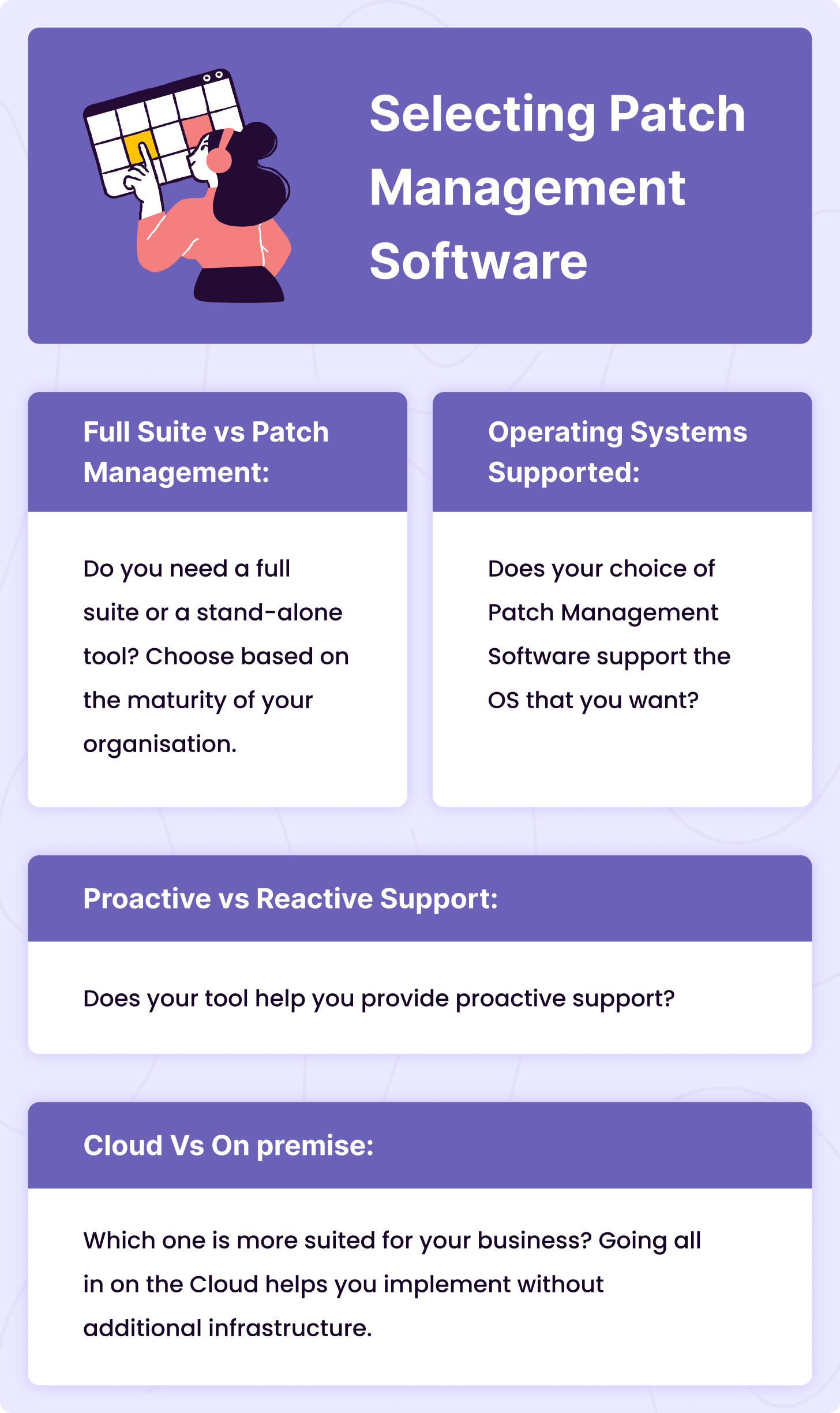
All your favorite tools, right here
No more headaches with managing patches, tickets, assets, projects - manage it all with SuperOps
